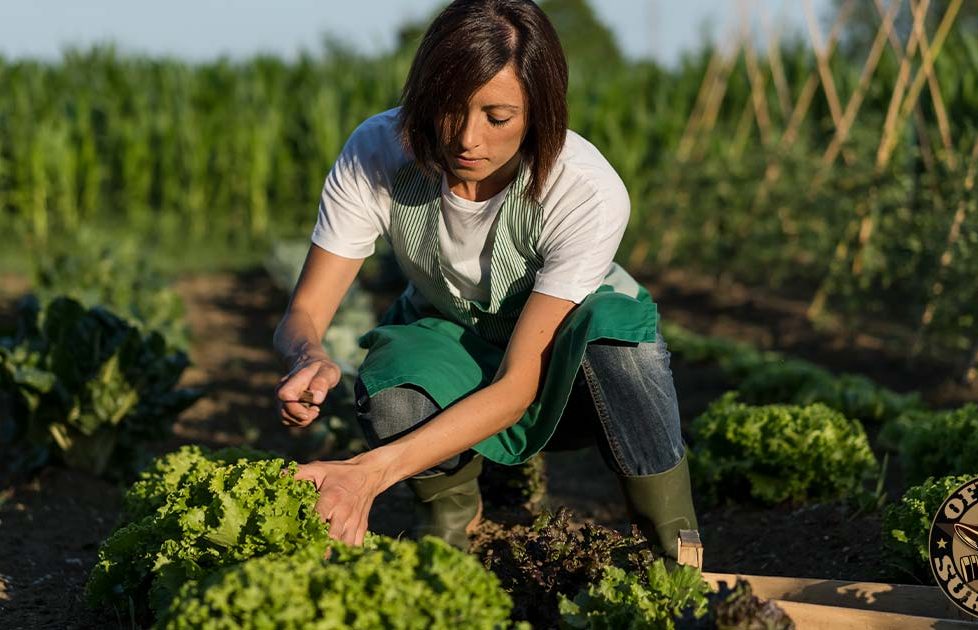Companion Planting Techniques: Your Essential Guide to a Productive Survival Garden

As a seasoned gardener and someone who thinks having a productive backyard garden is essential to be prepared for anything, you’re always on the lookout for ways to improve your garden’s health and productivity. One effective technique that can enhance the health of your vegetable garden is companion planting.
Companion planting involves growing different plant species in close proximity to each other, with the goal of creating mutually beneficial relationships that promote growth, deter pests, and improve overall garden health. So let’s explore the art of companion planting for vegetables, including the best plant pairings, the benefits of companion planting, and practical tips for successful implementation in your garden.
Companion planting offers several benefits that can significantly improve the health and yield of your vegetable garden. Some of the key benefits of companion planting include:
Pest Control: Companion planting can help naturally deter bugs without the need for harmful chemical pesticides. Certain plants, like marigolds, basil, and radishes, have natural pest-repellent properties that can help protect your vegetables from common pests like aphids, beetles, and flies.
Pollination: Some companion plants, such as flowers, attract pollinators like bees, butterflies, and other beneficial insects, which can help increase the pollination of your vegetable crops. Improved pollination can result in higher yields and better-quality fruits and vegetables.
Soil Health: Companion planting can also improve soil health by adding organic matter, increasing nutrient availability, and enhancing soil structure. For example, legume plants like beans and peas fix nitrogen in the soil, which can benefit neighboring plants by providing them with a natural source of fertilizer.
Biodiversity: Companion planting promotes biodiversity in your garden by encouraging the growth of different plant species. This diversity can help create a more balanced ecosystem in your garden, leading to better overall plant health and resilience to diseases and pests.
Space Maximization: Companion planting allows you to make the most of limited space in your garden. By carefully selecting plant pairings, you can utilize vertical space, create natural shade or windbreaks, and optimize the use of available resources like sunlight, water, and nutrients.
Sustainable Gardening: Companion planting is a sustainable gardening practice that reduces the reliance on chemical fertilizers and pesticides, making it an eco-friendly option for avid gardeners. It promotes a more natural and holistic approach to gardening, which can result in a healthier and more environmentally friendly garden.
Dispelling common myths and misconceptions about companion planting can help preppers make informed decisions in their gardens. Here are some examples:
To ensure successful companion planting in your vegetable garden, consider the following tips:
Know Your Plants: Research and understand the growth habits, nutrient requirements, and pest vulnerabilities of your vegetable plants. This knowledge will help you select suitable companion plants that can complement and benefit each other.
Plan Your Layout: Plan your garden layout carefully, considering the spacing and arrangement of companion plants. Some plants may compete for resources or inhibit each other’s growth if planted too closely, so be mindful of their needs and growth patterns.
Rotate Crops: Just like traditional gardening, crop rotation is also essential in companion planting. Avoid planting the same vegetables or their companions in the same spot year after year to prevent nutrient depletion and disease buildup.
Use Succession Planting: Succession planting involves planting different crops in the same space in a sequence, allowing you to harvest multiple crops in one season. This technique can help optimize space and extend your harvest season.
Monitor Pests and Diseases: Keep a close eye on your garden for any signs of pests or diseases. Early detection and intervention can prevent the spread of pests or diseases and protect your companion plants.
Experiment and Observe: Companion planting is not an exact science, and different gardens may have different results. Don’t be afraid to experiment and observe the interactions between your companion plants. Keep a garden journal to record your observations and learn from your experiences.
I know how important it is to carefully plan out your garden to optimize plant health and yield. This chart lists a list of vegetables, ranging from tomatoes to cucumbers to carrots, and their recommended companion plants. These companion plants can help deter pests, improve pollination, enrich the soil, and provide shade or support to their companion crops. By strategically selecting companion plants for your vegetables, you can create a harmonious and thriving ecosystem in your garden.
For example, did you know that planting basil alongside tomatoes can help repel pests like aphids and whiteflies while enhancing the tomatoes’ flavor? Or that planting marigolds near your cucumbers deters pests like beetles and nematodes? These are just a couple of examples of the many beneficial interactions between companion plants.
So, whether you’re a seasoned gardener or just starting, this companion planting chart is a valuable resource to help you plan your garden and reap the benefits of healthy and productive plants.
While companion planting can be beneficial, there are some considerations and challenges to keep in mind:
Companion planting can be a valuable strategy for preppers to enhance the productivity and resilience of their vegetable gardens. With careful observation and experimentation, companion planting can be a successful gardening technique for preppers to incorporate into their preparedness plans.
